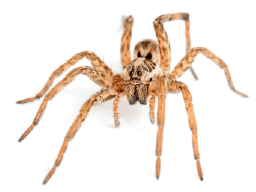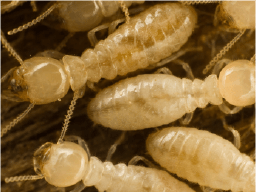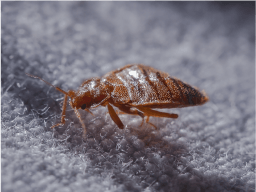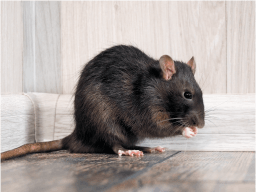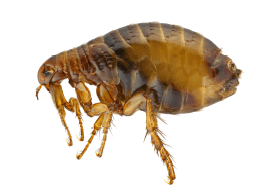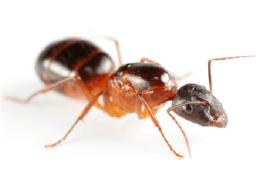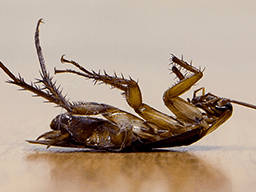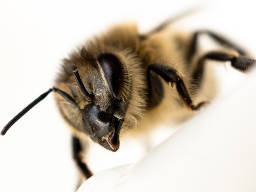Wasps vs Bees: What Are the Differences?
by John Saenz | February 7, 2025 | Blog

If you’ve noticed flying insects around your property, you might be wondering whether you’re dealing with wasps or bees. While both insects can sting, they have distinct characteristics and behaviors. Understanding these differences is crucial for implementing appropriate control measures while also protecting beneficial pollinators.
What are wasps?
Wasps are predatory insects belonging to the order Hymenoptera. Unlike bees, most wasps are not pollinators but rather hunt other insects to feed their young. Common species include paper wasps, yellowjackets, and hornets.
These insects can be more aggressive than bees, particularly when defending their nests. Most wasps are social insects living in colonies, though some species are solitary. Their nests are typically made from wood fiber that they chew into a paper-like material.
What are bees?
Bees are pollinating insects that play a crucial role in our ecosystem. They collect nectar and pollen from flowers to feed themselves and their colonies. While honeybees are the most well-known, there are thousands of bee species, including bumblebees and carpenter bees.
Most bees are less aggressive than wasps and will only sting when they feel threatened. They’re essential for pollinating crops and maintaining biodiversity in our environment.
What do wasps look like?
Wasps have slender bodies with a distinctive narrow waist between their thorax and abdomen. Most common species are black and yellow, though some may be brown or reddish. They have smooth, shiny bodies with little to no hair, and their wings are clear and fold lengthwise when at rest. Their legs often hang down during flight, and they have powerful mandibles for hunting prey and gathering wood fiber for nest building.
What do bees look like?
Bees typically have robust, fuzzy bodies that help them collect pollen. Unlike wasps’ smooth appearance, bees are covered in branched or plume-like hairs. Honeybees are usually golden-brown with black stripes, while other species might be darker or show different color patterns.
Their bodies are generally rounder and thicker than wasps, with flattened back legs designed for carrying pollen. Their wings are clear and remain flat when at rest.
What are some main differences between wasps and bees?
Several key characteristics distinguish wasps from bees. Wasps have smooth, shiny bodies while bees are fuzzy. Their behavior differs significantly—bees focus on gathering pollen and nectar, while wasps are predatory.
Nest construction varies too—wasps build papery nests from wood fiber, while bees create wax honeycombs. Wasps tend to be more aggressive and can sting multiple times, while most bees can only sting once. Additionally, wasps are less active in pollination compared to bees, which are crucial pollinators.
What are more dangerous: wasps or bees?
Wasps generally pose a higher risk than bees due to their more aggressive nature and ability to sting multiple times. They’re more likely to defend their nests aggressively and can pursue perceived threats for considerable distances. Unlike most bees, which die after stinging once, wasps can sting repeatedly. Additionally, wasps are more likely to show up at outdoor gatherings, attracted to sugary drinks and foods.
However, both insects can trigger severe allergic reactions in sensitive individuals. While bee stings are typically less frequent, they can be equally dangerous for those with allergies. Honeybees also tend to be more defensive near their hives, which contain food stores and developing young they need to protect.
Lifecycle of a wasp
Wasp colonies begin in spring when queen wasps emerge from hibernation. Each queen starts building a small nest and lays eggs that develop into worker wasps. These workers then take over nest building and foraging while the queen focuses on egg laying.
Throughout summer, the colony grows rapidly. In late summer, the colony produces new queens and males. After mating, the new queens find sheltered spots to hibernate through winter, while the old colony, including workers and the old queen, dies off.
Lifecycle of a bee
Honeybee colonies operate year-round, unlike seasonal wasp colonies. The queen bee lays eggs in honeycomb cells, which develop through larval and pupal stages before emerging as adult bees.
Worker bees progress through different roles as they age, starting as nest cleaners and eventually becoming foragers. In spring and summer, colonies might produce new queens, leading to swarming where part of the colony leaves with the old queen to establish a new hive.
How to know if you have a wasp infestation
Signs of a wasp infestation include visible nests in sheltered areas like eaves, attics, or wall voids. You might notice wasps frequently entering and leaving from a specific spot, indicating a nest nearby.
Paper wasps build open-celled nests that look like upside-down umbrellas, while yellowjackets often nest in ground cavities or wall voids. An increase in wasp activity, particularly around your home’s entry points, can signal an established colony.
How to know if you have a bee infestation
Bee infestations typically show different signs than wasp problems. Look for consistent bee activity around your property, particularly bees entering and exiting the same area of your home’s structure.
Carpenter bees leave nearly perfect round holes in wood surfaces. Honeybees might create dark stains on walls or ceilings from honey seepage. You might also hear buzzing sounds within walls if honeybees have established a colony inside your home’s structure.
Do you get rid of wasps and bees the same way?
Wasps and bees require different control approaches due to their distinct behaviors and environmental roles. While wasp nests often need to be eliminated, bee colonies should ideally be relocated by professional beekeepers when possible.
For both insects, professional pest control services offer the safest and most effective solutions, as attempting DIY removal can be dangerous and potentially illegal in the case of protected bee species.
How to prevent a wasp infestation
Preventing wasp infestations starts with making your property less attractive to nest-building queens in spring. Seal potential entry points around your home, including gaps in siding, eaves, and around utility entries. Remove food sources by keeping outdoor eating areas clean and garbage bins sealed. Consider using wasp-deterrent plants around your property, such as eucalyptus or citronella.
Regular inspection of your property’s exterior can help catch new nests early when they’re easier to address. Pay particular attention to sheltered areas like eaves, porches, and shrubs where wasps commonly build nests.
How to prevent a bee infestation
Preventing bee infestations focuses on making your property less appealing for colony establishment. Regularly inspect and maintain wooden structures to prevent carpenter bee damage. Seal potential entry points around your home, particularly gaps larger than 1/8 inch. Keep an eye on exterior walls and eaves where honeybees might attempt to establish colonies.
Consider working with a landscaper to design bee-friendly areas away from your home if you want to support pollinators without encouraging them to nest in your structure. This might include creating designated flower beds at a safe distance from your house.
If you’re dealing with wasps or bees around your property, don’t wait for the problem to escalate. Contact Pest Control Experts today for a free inspection and customized treatment plan from highly trained pest control professionals. Our experts can safely address wasp problems while helping protect beneficial bee populations through appropriate control or relocation methods.





